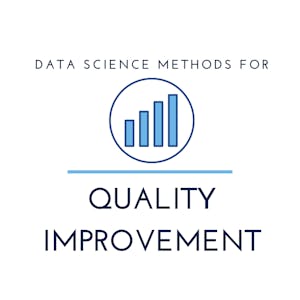Enhance your skills in quality improvement with the Stability and Capability in Quality Improvement course. This comprehensive program delves into the critical aspects of analyzing process stability, statistical control, and capability for quality improvement. Through a combination of theoretical concepts and practical applications using R software, you will develop a deep understanding of how to assess and improve processes to meet customer specifications.
Throughout this course, you will learn to identify special causes of variation, create and interpret control charts for both continuous and discrete data, and analyze the capability of a process to meet customer specifications. With an emphasis on practical skills, you will gain hands-on experience in using, selecting, and interpreting process control charts to ensure process stability and make informed decisions for process improvement.
Certificate Available ✔
Get Started / More Info
The course modules cover essential topics including understanding process variation, control charts for different data types, non-normally distributed data, and process capability assessment.
Module 1: Understanding Process Variation, Process Control and Control Charts
Module 2: Xbar and R / Xbar and S Charts / X and MR Charts
Module 3: X and Moving Range Charts for Non-Normally Distributed Data
Module 4: Process Capability
Module 5: Control Charts for Discrete Data
Bayesian Statistics is a comprehensive Specialization covering Bayesian methods, R programming, and time series analysis, culminating in a skill-building capstone...
Statistical Modeling for Data Science Applications equips learners with advanced statistical modeling techniques, including regression analysis, ANOVA, and generalized...
Causal Inference is a Master's level course providing a rigorous mathematical survey of inferring causation, offering methods to estimate causal relationships and...
Inferential Statistics introduces students to making inferences from sample relations to population, covering significance testing, statistical tests, and software...